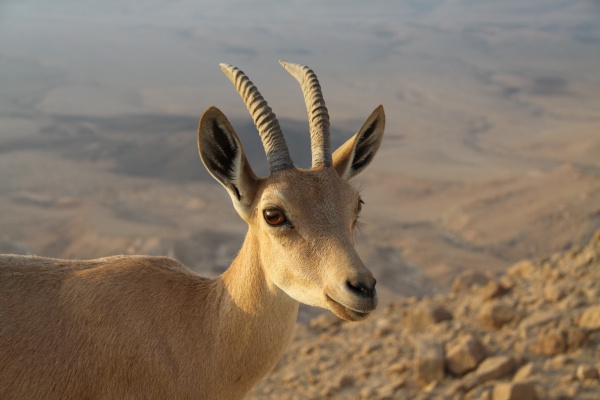Facts About Nubian ibex
The Nubian ibex is a captivating desert-dwelling goat that inhabits the mountainous regions of northern and northeastern Africa, as well as the Middle East. Originally thought to be a subspecies of the Alpine ibex, it is now more commonly recognized as a distinct species. Unfortunately, there are only about 1,200 of these wild goats remaining in their natural habitats.
What Do They Look Like?
- Size: Nubian ibexes stand about 65–75 cm tall at the shoulder and weigh around 50 kg.
- Color: They have a light tan coat with a white underbelly, and males sport a dark brown stripe down their backs.
- Horns: Both genders possess long, slender horns. Males' horns can grow up to about 1 meter, while females' horns are smaller, around 30 cm.
Life in the Wild
- Habitat: These ibexes thrive in rugged, arid, and mountainous areas, feeding primarily on grasses and leaves.
- Predators: They must be vigilant against predators such as leopards, wolves, foxes, eagles, and vultures.
- Social Life: Nubian ibexes are social creatures. Females, juveniles, and young males live in herds, while older males often roam alone or in small groups. During the breeding season, males join the female herds and compete by clashing horns.
Conservation Status
The International Union for Conservation of Nature (IUCN) lists the Nubian ibex as "vulnerable" due to their declining numbers. With fewer than 10,000 mature individuals left, they face threats from habitat destruction, hunting, and competition with livestock.
The Nubian Ibex in Israel
In Israel, the ibex population suffered significantly after World War I due to excessive hunting. However, their numbers rebounded when hunting was banned and nature reserves were established. Today, you can find them in three main areas: the Judean Desert, the Negev mountains, and Eilat.
Cultural Significance
- Biblical Reference: The name "Yael" meaning "Ibex" in Hebrew, is famously borne by a Biblical heroine.
- Media Appearances: The Nubian ibex has also made its mark in popular culture, featuring in the BBC documentary "Life" and the TV series "Planet Earth" (episode five, "Deserts").
The Nubian ibex is not only a unique and resilient animal but also holds a special place in both nature and culture. With continued conservation efforts, there is hope that these remarkable creatures will thrive for generations to come.

 Sudan
Sudan